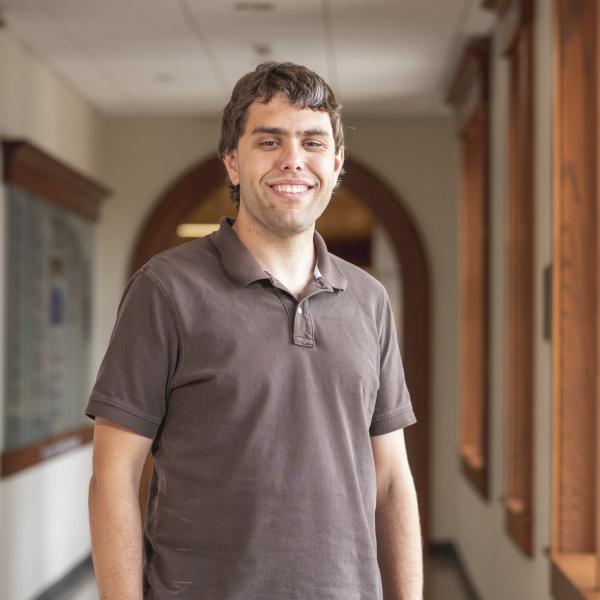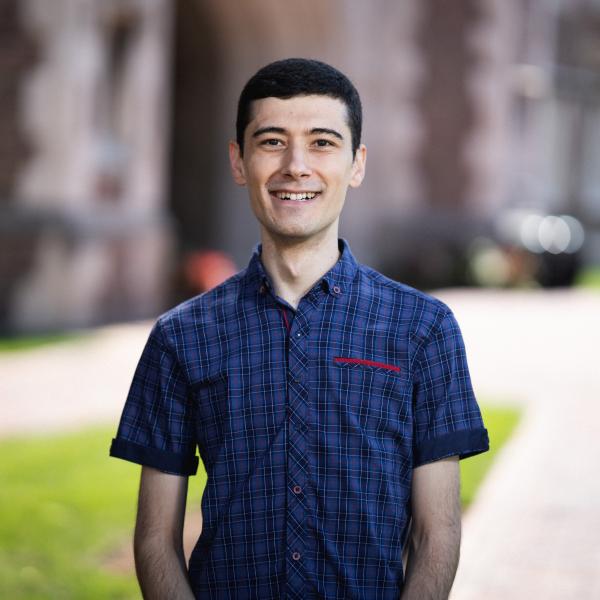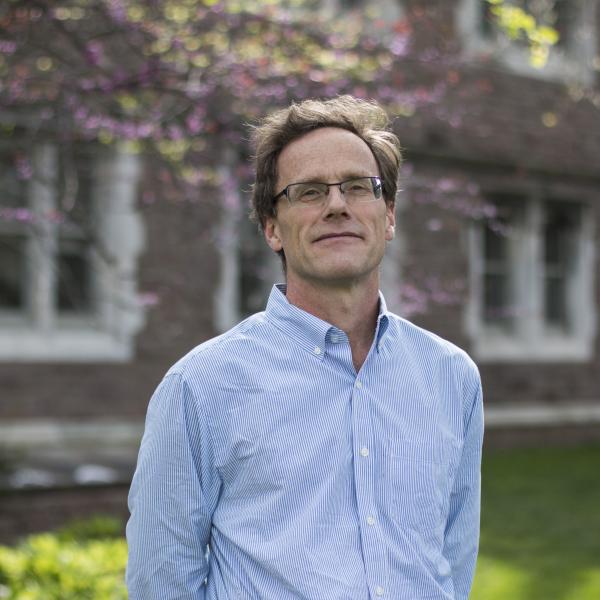Professors Gary Jensen and Steven Krantz reflect on Dr. Boothby's life and contributions to the mathematical sciences.
Emeritus Mathematics Professor of Washington University William M. Boothby was born April 1, 1918, in Detroit, Michigan, the son of Thomas Franklin and Florence Munger Boothby. He received a six-year scholarship to attend the Cranbrook Academy in Bloomfield Hills, Michigan. He earned a Baccalaureate degree from the University of Michigan in 1940 and immediately commenced graduate studies in mathematics there. These were interrupted by World War II. In 1942 he enlisted in the Army Air Force, trained as a pilot, and flew over 600 hours before his discharge in 1945. During his training he was copilot of a B17 that was forced by weather to crash land in a field in upstate New York in January 1945.
He married Ruth Robin of Detroit, Michigan, in 1947. They raised three sons, Daniel, Thomas, and Mark. Under the supervision of Wilfred Kaplan he completed his Ph.D. in mathematics at the University of Michigan in 1949. His dissertation was titled “A topological study of the level curves of harmonic functions.” His first two publications continued and extended this work. He was appointed Instructor and later Assistant Professor of Mathematics at Northwestern University in 1948. He held a one-year fellowship at the Eidgen¨ossische Technische Hochschule (ETH) in Zurich during 1950-51. In 1959 Washington University in St. Louis (WUSTL) succeeded in recruiting Bill to join their Mathematics Department as an effort to build its research activity and ability to recruit graduate students. He spent the academic year 1960-61 on a fellowship at the Institute for Advanced Study in Princeton, New Jersey.
During his time at Northwestern, Boothby’s research interests broadened to Hermitian manifolds and to contact structures. High points of this research are contained in his paper with H.C. Wang titled “On contact manifolds” published in 1958 in the Annals of Mathematics, and his paper with Wang and Shoshichi Kobayashi titled “A note on mappings and automorphisms of almost complex manifolds” published in 1963 in the Annals of Mathematics. An early indication of Bill’s eventual strong interest in control theory is contained in his paper “On the finite subgroups of connected Lie groups”, written with H.C. Wang and published in 1965 in Comment. Math. Helv.
In 1975 Bill published his very popular textbook An Introduction to Differentiable Manifolds and Riemannian Geometry, which defined the curriculum and standard of the introductory graduate differential geometry course worldwide for the next quarter century. A second edition was published in 1986.
Bill’s son Mark relates the following moving experience concerning this text book"
"In what for me was a profoundly joyful encounter at an immunology research conference, I was cruising rows of posters when a mathematical modeling specialist, faculty in UK but of Spanish education, noticed my name tag, stopped and asked ‘might I by any chance be related to William Boothby?’ Her face glowed when I indicated he was my dad, still alive and well (maybe a mere 94 at the time). Apparently, that book (over 30 years after publication) was still widely used as an essential gateway to the uses of these parts of math in modeling biological processes, and was one on which she and many colleagues had cut their teeth."
In addition to the fellowships at ETH and the Institute, Bill and Ruth spent many semesters abroad beginning with a one year sabbatical leave during 1965-66 at the Department of Mathematics of the University of Geneva in Switzerland. His research during this sabbatical generalized S. Smale’s thesis and a result of C. Carath´eodory, and was published in “On the integral curves of a linear differential form of maximum rank” in Math. Annalen in 1968. In 1971 they spent a one-semester leave at the Department of Mathematics of the University of Strasbourg in France. Bill taught several times at the summer school in Perugia, Italy, using this opportunity to recruit excellent graduate students to WUSTL. In the early 1980s he visited the Mathematics Department of the Universidad Naciona`l de Cordoba in Argentina where his Ph.D. student Humberto Alagia was a professor. The Boothbys spent parts of many summers at a cottage they had built in 1971-72 on a hillside outside the farming village of Lauenen, near Gstaad, Switzerland.
In 1969 Bill and his colleague, Guido Weiss, became the principal investigators for a very large grant from the Office of Naval Research for a special year in geometry and harmonic analysis at Washington University. This grant was probably the largest single factor in bringing the mathematics department of WUSTL into national prominence. It provided two one-year post-doctoral fellowships (one of which was held by one of us – GRJ), and brought dozens of prominent visitors to the campus for visits of several days to several weeks to give lectures and short courses.
Bill directed seven Ph.D. students during his career, all at WUSTL. In chronological order these are Philip Zwart (1965), Humberto Alagia (1971), Eduardo Cattani (1972), Jackson Sedwick (1974), Ellen Livingston (1982), Riccardo Marino (1982), and Wijesooriya Dayawansa (1986).
In the middle of the 1970s Bill’s research interests became more applied, primarily in control theory. His student Phillip Zwart became a professor in the Systems Science and Mathematics Department in the Engineering School of WUSTL. Bill began productive research collaborations with several people in that department, including David Elliott, Daizhan Cheng, Tzyh Jong Tarn, and Zwart. He published many papers in this area in the decade preceding his retirement in 1988, mostly coauthored with these colleagues and his students Marino and Dayawansa. Federal law at that time required Bill to retire at age 70 when he had barely reached maturity. Retirement did give him the opportunity to pursue his interests in Italian and fine arts.
Bill was a sound influence on many students and colleagues. He counseled students during the draft and Vietnam conflict. He is remembered warmly by many WUSTL graduate students. Typical is this reminiscence of Marco Peloso (who is now quite a distinguished mathematician in his own right):
"When I arrived in the US as a graduate student at Washington University, my first assignment was to be a grader for Bill Boothby. He was my first real contact with professional life. I remember vividly my first meetings with Bill—after so many years and interactions, I take the liberty of calling him simply Bill.
From the very beginning he was extremely kind, calm, and made me feel welcome and at ease. He spent a lot of time talking to me about the various aspects of becoming a mathematician, from the criteria to use when grading, to how to learn to be a productive scientist. I was impressed by his kindness and I always found talking to him very pleasant and instructive.
As the years went by, Bill remained generous in making me feel welcome in the department and in St. Louis. Many of my classmates felt the same, and we all share memories of Bill and Ruth and their big hearts and kindness. Bill was a very special person. He made a big impact in my personal and professional life and I am extremely grateful to have known him."
Bill’s was a familiar face on the running tracks of WUSTL. Unlike most of his colleagues, even those much younger, he ran around the track as opposed to jogging the course. Retired faculty member Richard Rochberg, who was himself an ardent runner, has these observations about Bill:
When I used to go running every day from my office I usually ran in Forest Park, but sometimes I would run on the Wash U. track in the stadium. Several times when I did it I saw Bill there; he was doing wind sprints on the stadium stairs. My reconstruction is that he was in his mid 70s at the time.
The mile from his house to the mathematics department Bill covered daily by walking or bicycle. After his retirement in 1988, one of his notable trips involved hiking across Sicily. He learned a passable Italian before making this trip. In a communication written near his 100th birthday Bill mentioned that he was living in an assisted living establishment in Nashville, Tennessee, only about a mile from his son Mark’s house, thus within easy walking distance.
Bill died on February 14, 2021, in Nashville, Tennessee, just six weeks before his 103rd birthday. He is survived by his sons Daniel Boothby of Montreal, Canada, Thomas Boothby, of State College, Pennsylvania, and Mark Boothby of Nashville, Tennessee. He was preceded in death by his wife, Ruth Boothby, who died in June, 2013, and his brother Thomas Robert Boothby.




